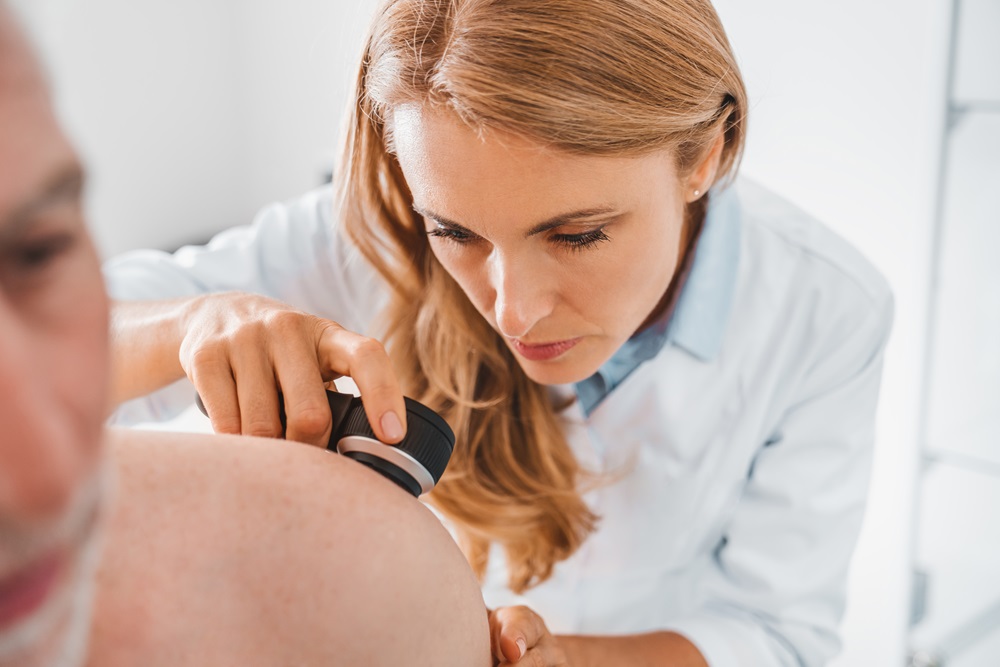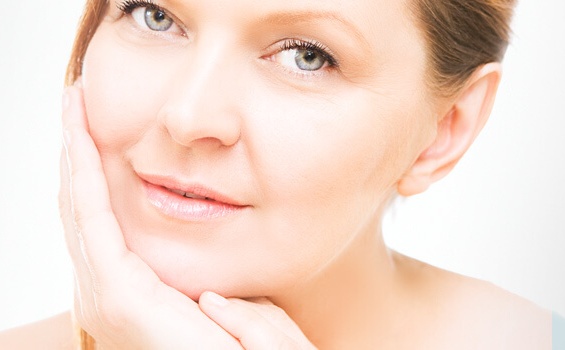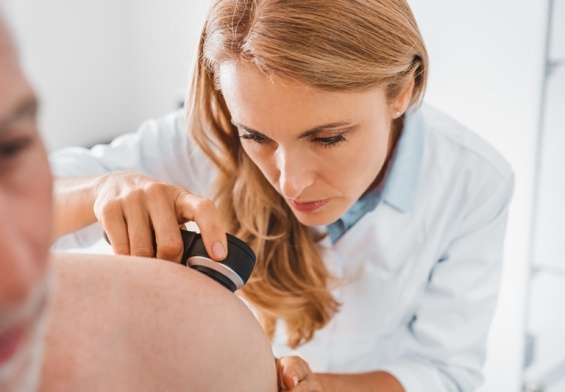Skin cancer is the most common form of cancer in the United States and globally, affecting millions each year. Understanding the demographics of skin cancer leads to better prevention and earlier detection.
This knowledge helps people across Pennsylvania’s Pocono Mountains region protect their skin health. Let’s look at skin cancer incidence across various demographics, including age, gender, ethnicity, and geographic trends. We’ll also highlight the role of holistic care in Delaware Water Gap, PA in promoting well-being and reducing skin cancer risk.
By combining traditional medical knowledge with natural therapies available in Monroe County, you can defend against skin cancer while supporting your body’s natural healing processes.
Understanding Key Demographic Factors in Skin Cancer Risk
How Age Affects Skin Cancer Risk
Non-melanoma skin cancers like Basal Cell Carcinoma (BCC) and Squamous Cell Carcinoma (SCC) are more prevalent in adults over 50. This is due to cumulative sun exposure over a lifetime. But, melanoma presents a unique profile. It’s one of the most common cancers among young adults aged 25–29, while also impacting older individuals.
Cumulative sun exposure plays a significant role in increasing skin cancer risk over time. Yet, early lifestyle choices can influence skin health. By adopting healthy habits, you build a strong foundation for long-term skin health.
Skin Cancer by Gender
Men have a higher risk of dying from melanoma, especially after age 50. This is often due to late detection. Many men overlook skin changes, especially on areas they can’t see like the back or scalp. Late detection often means the melanoma has spread, making treatment more difficult. Common areas men miss include the back of the neck, ears, and lower legs.
Actionable Steps:
- Perform a monthly skin self-exam, using a mirror to check hard-to-see areas.
- Ask your partner or a family member to help check your back and scalp.
- Schedule an annual dermatologist appointment, especially if you have certain risk factors.
- If you notice a mole changing, bleeding, or with an irregular border, see a dermatologist immediately.
- Many men think a yearly physical exam is enough, but they’re not as thorough as a dermatological exam.
Skin Cancer by Ethnicity & Race
While skin cancer rates are lower in darker skin tones, it’s often diagnosed at later, more dangerous stages. This is due to a misconception that darker skin is immune. In African Americans, melanoma often appears on the palms, soles, and nail beds (Acral Lentiginous Melanoma). This location is often overlooked.
Actionable Steps:
- Pay close attention to your palms, soles, and nail beds for any changes in pigmentation or unusual growths.
- If you notice any dark streaks under your nails that are not due to injury, see a dermatologist immediately.
- Educate yourself about the signs of Acral Lentiginous Melanoma. It can be mistaken for other conditions.
- Examine any change in skin, regardless of skin tone.
- Many people think darker skin tones don’t need sunscreen. The truth is that everyone should use sunscreen. There are non-toxic alternatives available in Eastern Pennsylvania wellness centers.
Geographic and Environmental Influences on Skin Cancer
Geographic Trends in Skin Cancer
Geographic location influences skin cancer risk. Sunny and high-altitude areas, like Australia, New Zealand, and the southern U.S. see higher incidence rates. Utah, with its high altitude and outdoor lifestyle, also has one of the highest melanoma rates.
The elevation and seasonal outdoor activities in the Pocono Mountains offer unique risk factors. Higher elevations in Monroe County mean increased UV exposure, even on cloudy days. Additionally, hiking, skiing, and water recreation in Delaware Water Gap causes intermittent intense sun exposure.
Northern, less sunny states like Alaska, where there’s less UV exposure, see lower rates. Urban vs. rural disparities also exist, with rural areas often experiencing higher mortality rates.
These places have less access to dermatologists and later-stage detection. Seeking holistic care in Delaware Water Gap, PA provides a comprehensive wellness approach, incorporating nutrition, lifestyle changes, and natural skin care to lower risk.
Holistic Prevention Strategies in the Poconos Region
The Role of Holistic Care in Skin Cancer Prevention
Holistic care strengthens your body’s natural defenses against skin cancer. It uses integrative dermatology approaches available throughout Pennsylvania and beyond.
Nutritional Actions:
- Consume at least one cup of berries daily. Blueberries, strawberries and raspberries have high antioxidant content.
- Add a teaspoon of turmeric to your daily diet, either in food or as a supplement, to reduce inflammation.
- Include leafy greens such as spinach and kale in your diet daily.
- Try having a berry smoothie for breakfast, a large salad with grilled chicken for lunch, and baked salmon for dinner.
Stress Management Actions:
- Practice the 4-7-8 breathing method: inhale for 4 seconds, hold for 7 seconds, exhale for 8 seconds, for 5 minutes daily.
- Perform at least 20 minutes of moderate exercise, like walking or yoga, three times a week.
- Meditate for ten minutes a day. There are many apps that guide people through meditations.
- Many people believe that stress does not affect the physical body, but it has an impact on the immune system.
Key Risk Factors That Influence Demographics
A weakened immune system increases the risk of skin cancer. Frequent infections, slow wound healing, and persistent fatigue show a weakened immune system.
Actionable Steps:
- If you experience these symptoms, consult your doctor for a comprehensive evaluation.
- Talk to your doctor, especially if you’re experiencing these risk factors or taking immunosuppressant medications.
- Consume foods with probiotics, like yogurt, to support gut health and immune function.
- Consider immune-supporting herbs for skin health available from Monroe County holistic practitioners.
A family history of melanoma doubles your risk.
- Ask your family members about their history of skin cancer.
- Keep a record of your family history of skin cancer to share with your dermatologist.
- Many people think if they have a family history, there is nothing they can do, but they can take preventative measures.
UV exposure is the single biggest risk factor for all skin cancers, including exposure from sunlight and tanning beds. Physical traits like light skin, red/blonde hair, blue/green eyes, and freckles increase risk. The Delaware Water Gap area makes UV-protective nutrition and sun protection a necessity.
Skin Cancer Demographics FAQs
Can holistic approaches prevent skin cancer?
Holistic approaches complement conventional prevention strategies by strengthening your body’s natural defenses. While no approach guarantees prevention, integrative methods that include proper nutrition, stress management, and natural skin protection reduce risk factors.
How often should I have my skin checked if I live in Pennsylvania?
Dermatologists in Pennsylvania recommend annual professional skin examinations. Yet, those with high-risk factors should consider bi-annual checks. Between professional examinations, perform monthly self-examinations, especially during summer in the Pocono Mountains.
Which natural ingredients are most effective for skin protection?
Research supports several natural ingredients for skin health, including green tea extract, vitamin C, and vitamin E. Holistic practitioners in Delaware Water Gap use these ingredients alongside physical sun protection. But, natural ingredients should complement rather than replace broad-spectrum sunscreen.
Is skin cancer risk different in the Pocono Mountains compared to other regions?
The elevation and outdoor activities in the Pocono Mountains present unique risk factors. Higher elevations mean increased UV exposure, even on cloudy days. Seasonal outdoor activities like hiking, skiing, and water sports lead to intermittent intense sun exposure.
How can I find qualified holistic skin health practitioners in Delaware Water Gap?
Look for practitioners who integrate conventional medical knowledge with holistic approaches. Consider their credentials (nutrition, herbalism, naturopathy) and whether they work with dermatologists.
Taking Control of Your Skin Health
Understanding skin cancer demographics helps individuals assess their risk and take proactive steps. Early detection saves lives, and holistic wellness strategies can reduce long-term risks.
Actionable holistic tips include: regular skin self-checks and dermatologist visits; using natural sunscreen and protective clothing for all skin tones; avoiding tanning beds and reducing unnecessary UV exposure; and strengthening the skin’s natural defenses with holistic approaches available in Eastern Pennsylvania, including nutrition, stress management, and natural skincare.
If you’re looking for a natural, integrative approach to skin cancer prevention, consider holistic care in Delaware Water Gap, PA. It provides comprehensive wellness solutions that align with your body’s needs. By embracing holistic strategies, you can achieve optimal skin health and well-being.
Resources:
https://www.cdc.gov/skin-cancer/risk-factors/index.html
https://www.cancer.org/cancer/types/melanoma-skin-cancer/about/key-statistics.html
https://www.cancer.org/cancer/types/basal-and-squamous-cell-skin-cancer/about/key-statistics.html




